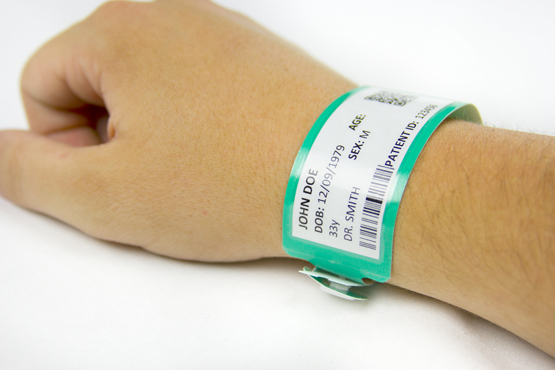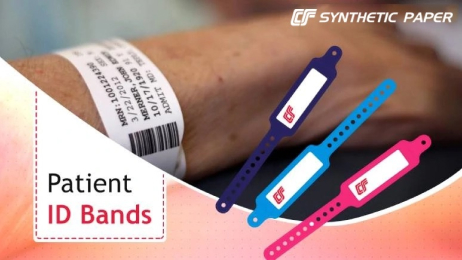The Link Between a Patient Identification Band and Enhanced Patient Privacy
The Link Between a Patient Identification Band and Enhanced Patient Privacy
Blog Article
Exploring the Numerous Sorts Of Patient Identification Band Utilized in Medical Facilities
In the complex world of healthcare, the essential function of Patient Identification bands typically goes undetected. These bands, varying from straightforward paper wristbands to sophisticated RFID bands, develop the backbone of Patient safety protocols, ensuring precision in Patient Identification.
Comprehending the Significance of Patient Identification Bands
While they might appear like mere devices, Patient Identification bands play an essential duty in medical centers. These bands serve as a critical device for validating Patient identification, protecting against medical errors associated to misidentification. Patient Identification bands likewise aid in simplifying management tasks, ensuring exact record-keeping and invoicing.
Traditional Paper Wristbands: Their Usage and Limitations
Standard paper wristbands have actually been a staple in Patient Identification across numerous medical facilities. While their use is prevalent, they nurture specific restrictions that might influence their effectiveness in Patient monitoring. This area will certainly focus on the scope of their application and the inherent downsides related to their usage.
Paper Wristbands: Use Extent
In the world of Patient Identification, paper wristbands have long held a crucial duty. These bands are normally made use of in outpatient settings, where the Patient's remain is temporary. The wristbands have essential info such as the Patient's name, date of birth, and a distinct Identification number. This straightforward, yet efficient system, allows physician to rapidly and precisely recognize people, ensuring the correct therapy is carried out. Paper wristbands are additionally utilized in emergency circumstances, where rapid Identification is paramount. Their usage includes events like blood donation drives and mass inoculation programs, better stressing their convenience. Regardless of advancements in innovation, the simple paper wristband continues to be a cost-efficient and trustworthy remedy for Patient Identification in various health care situations.
Limitations of Paper Wristbands
In spite of their extensive use, paper wristbands are not without their disadvantages. Their physical resilience is among the considerable limitations. Direct exposure to water, sweat, or misuse can provide them unreadable or perhaps trigger them to disintegrate. On top of that, paper wristbands typically lack the technological capabilities of more modern-day choices, such as barcoding or RFID chips, restricting their performance to simply showing written details. The lack of ability to upgrade or customize the information on the wristband is another shortcoming. Additionally, if the information is handwritten, readability can be endangered, causing prospective misidentification. Paper wristbands can create discomfort or skin irritation to some people, particularly when used for extended durations.
Barcoded Wristbands: Advancements in Patient Identification
While Patient Identification has long been a critical element of healthcare, the introduction of barcoded wristbands indicates a considerable jump forward. These bands utilize the simplicity of barcoding innovation, enabling Patient details to be promptly scanned and accessed. They improve the rate and precision of Patient Identification, minimizing the threat of medical mistakes connected to misidentification. Barcoded wristbands are cost-efficient, easy to create, and get rid of handwriting mistakes usual with manual systems. Nonetheless, they are not without restrictions. While they supply enhancements over typical bands, the barcode can become worn or smudged, providing it unreadable. Despite this, barcoded wristbands remain an essential device in modern-day medical care settings, signifying the intersection of technology and Patient care.
Superhigh Frequency Identification (RFID) Bands: a Step In The Direction Of Futuristic Medical Care
The evolution of Patient Identification bands has caused the development of Superhigh frequency Identification (RFID) Bands (patient identification band). These ingenious devices present vital benefits for healthcare centers, supplying a much more effective and highly progressed methods of Patient Identification. The implementation you can check here of RFID in medical care is a substantial action in the direction of a more futuristic method to Patient management and safety and security
Comprehending RFID Bands

RFID Bands: Trick Advantages
Largely, these bands improve Patient security by offering exact, instantaneous Identification, thus lowering clinical errors. RFID bands can store a huge amount of Patient information, consisting of clinical background and allergies, allowing individualized treatment. In general, RFID bands represent a significant improvement in Patient Identification innovation, profiting both people and health care companies.
Implementing RFID in Health Care
These bands provide a smooth means to track and identify people, guaranteeing their safety and enhancing performance in therapy procedures. RFID bands minimize clinical mistakes by giving accurate Patient Identification, which is important in preventing misdiagnosis or incorrect medicine management. Hence, the implementation of RFID bands is a significant action in the direction of improving Patient safety and security and healthcare delivery.

Color-Coded Wristbands: Helping in Quick and Accurate Medical Diagnosis
In the bustling atmosphere of a clinical center, color-coded wristbands have arised as essential devices for swift and specific Identification of an individual's clinical condition. These wristbands, worn by individuals, lug details colors that match to various clinical problems or standings. As an example, red might suggest allergic reaction risks, while yellow discover this could signify a fall risk. This system is designed to provide immediate aesthetic cues to healthcare companies, improving Patient security and care top quality. In emergency situation scenarios, using these wristbands permits fast decision-making. Nonetheless, the effectiveness of color-coded wristbands relies on the harmony of color analysis throughout health care institutions, needing common standards for regular application.
Approaches for Efficient Application and Management of Patient ID Bands
Achieving ideal use of Patient Identification bands requires a well-structured strategy for their application and management. The initial step entails training all health and wellness personnel on the relevance of properly using and checking out these bands. Healthcare facilities ought to standardize the usage of ID bands throughout all divisions, making sure uniformity and decreasing inconsistencies. Regular audits ought to be carried out to validate adherence to policies and to remedy any kind of incongruities. Patient education is likewise essential; individuals must understand the function of the bands and the need for their constant wear. patient identification band. Last but not least, it's necessary to have a backup strategy in position, such as barcode scanning or biometrics, to ensure that Patient Identification is never endangered.
Verdict
Patient Identification bands are vital in clinical centers to guarantee security and accuracy. Effective application and monitoring of these bands can dramatically reduce medical mistakes, improve performance, and enhance total Patient treatment.
These bands, varying from straightforward paper wristbands to sophisticated RFID bands, form the foundation of Patient safety and security procedures, making certain precision in Patient Identification.The development of Patient Identification bands has actually brought about the appearance of Radio Regularity Identification (RFID) Bands. On the whole, RFID bands stand for a significant advancement in Patient Identification innovation, profiting both people and health care service providers.
RFID bands minimize clinical errors by providing precise Patient Identification, which is important in protecting against misdiagnosis or wrong medication management. Patient education and learning is additionally vital; individuals should comprehend the objective of the bands and the demand for their continuous wear.
Report this page